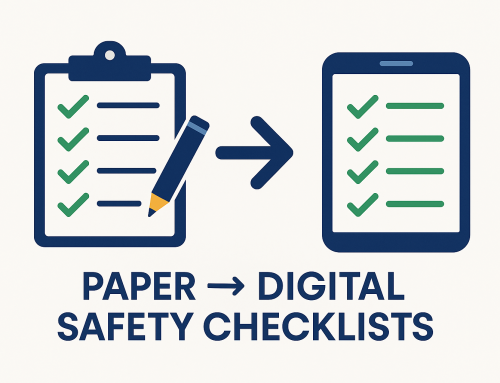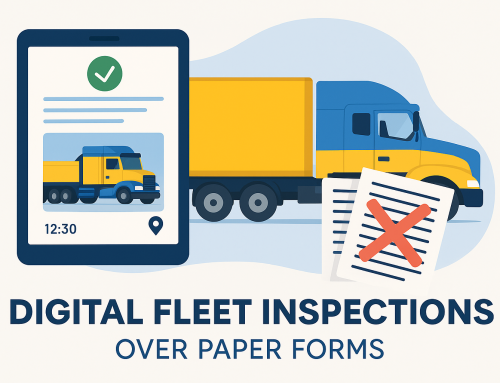Building Safe and Sound: Why Risk Assessments Are Critical in Construction
Quick Highlights
- Risk assessments help identify and control hazards before they escalate.
- Pre-construction risk assessments improve project planning and compliance.
- Compliance with the Model WHS Act and Code of Practice ensures legal protection.
- DIGI CLIP mobile forms simplify risk assessments and safety documentation.
Content
Construction sites are dynamic, fast-paced environments where multiple activities occur simultaneously. While these workplaces bring architectural visions to life, they also pose significant risks. Implementing a robust risk assessment in construction process is essential for preventing accidents, ensuring compliance, and safeguarding workers. This post explores the importance of risk assessments, how they align with the Model Work Health and Safety (WHS) Act, and how digital safety checklists for construction and DIGI CLIP mobile forms streamline this critical process.
Why Risk Assessments Are Vital in Construction
A risk assessment is more than a legal obligation—it's a proactive safety strategy. By identifying hazards and implementing controls, construction companies can protect their workforce, avoid costly delays, and build trust with clients. The Model WHS Act and Model Code of Practice: Construction Work outline clear guidelines for conducting effective risk assessments. For a deeper dive into digital solutions, check out The Ultimate Guide to Digital Safety Compliance Tools for SMBs.
The Pre-Construction Advantage
Carrying out risk assessments during the planning stage provides major benefits:
- Early Risk Identification: Spot hazards before work begins and implement preventive measures.
- Better Resource Allocation: Allocate funds and manpower to address risks upfront.
- Regulatory Compliance: Meet WHS requirements early, speeding up permits and approvals.
- Safety Culture: Involving workers early fosters a shared responsibility for safety.
Learn more about tailored digital tools in Industry-Specific Digital Checklists.
Compliance and Key Benefits
Risk assessments deliver multiple benefits beyond compliance. Combined with digital solutions, they enhance audit efficiency. For further insights, read Enhancing Compliance Audits with Digital Tools.
- Prevent workplace accidents and protect workers.
- Save costs by reducing compensation claims and legal disputes.
- Boost productivity and morale by ensuring a safer work environment.
- Enhance company reputation and win client confidence.
- Provide legal protection by documenting safety measures taken.
Embracing the Model Code of Practice
The Model Code of Practice: Construction Work is a vital guide for PCBUs (Persons Conducting a Business or Undertaking). It outlines:
- How to identify and assess hazards such as working at heights or handling hazardous substances.
- Implementation of the hierarchy of controls (elimination, engineering controls, PPE, etc.).
- Continuous review and monitoring of safety measures.
- Worker training and communication of safety protocols.
The Risk Assessment Process
Safe Work Australia recommends a four-step approach:
- Identify Hazards: Evaluate all tasks, equipment, and site conditions.
- Assess Risks: Determine the likelihood and impact of each hazard.
- Control Risks: Apply the hierarchy of controls to reduce or eliminate risks.
- Review Measures: Continuously monitor and update safety protocols.
About DIGI CLIP mobile forms
DIGI CLIP is a cloud-based mobile checklist and inspection solution designed to simplify safety, compliance, and operational reporting. With features like photo evidence, digital signatures, and real-time reporting, DIGI CLIP eliminates paper forms and streamlines construction site safety management.
FAQs
Risk assessments should be conducted before each project phase and reviewed regularly, especially when new hazards arise.
The PCBU is primarily responsible, but worker input and safety representatives play vital roles.
Identify hazards, assess risks, implement control measures, and review regularly.
Common measures include elimination of hazards, engineering controls, PPE, and administrative protocols.
They prevent accidents, ensure compliance with the WHS Act, and protect both workers and project outcomes.
Conclusion
Risk assessments are the cornerstone of safe, efficient construction projects. By following the Model WHS Act and Code of Practice, businesses can proactively manage hazards, avoid costly delays, and build a strong safety culture. For a broader perspective, explore our post on Digital Safety Compliance Tools.
With DIGI CLIP mobile forms, completing and documenting risk assessments becomes effortless—fully digital, fast, and accessible from any device. Capture photos, add comments, and secure digital signatures in minutes while ensuring compliance.
“DIGI CLIP has cut our reporting time by 35%, and our safety audits have never been easier.” – Construction Site Manager, NSW
Don’t wait until an incident occurs—streamline your safety checks today. Thousands of businesses trust DIGI CLIP to stay compliant and improve productivity.








Leave A Comment